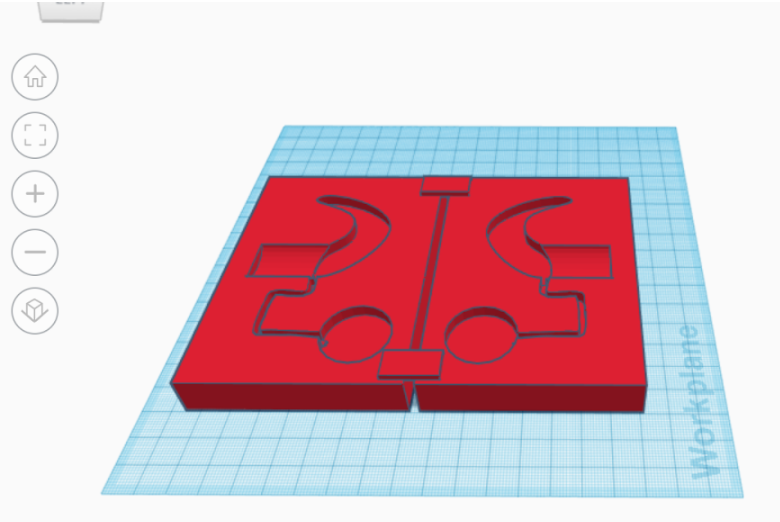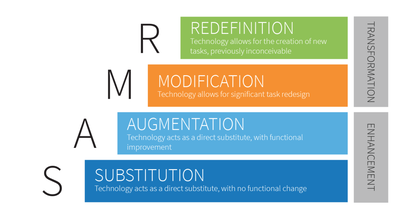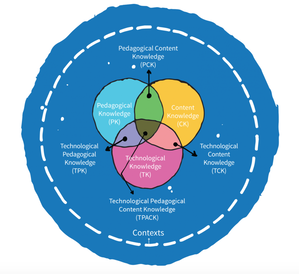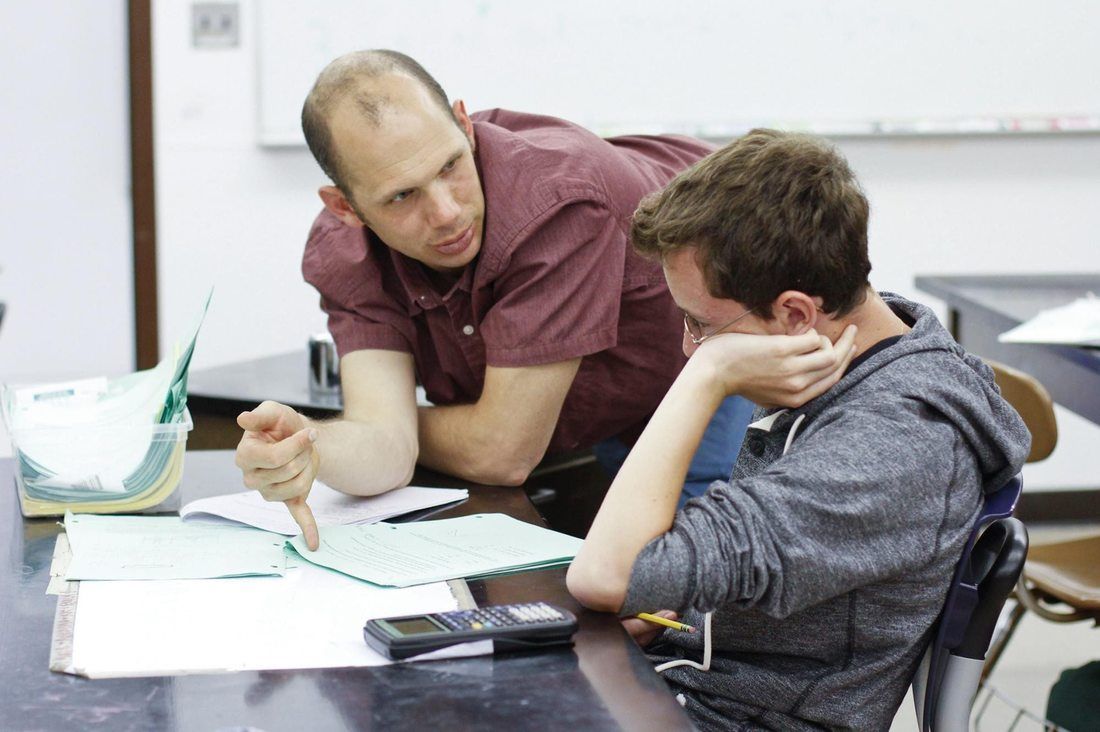|
|
|
This a quick post just to emphasize (as I have written about before) how much I LOVE using hypothetical medical case studies as inquiry entry points in my Biology classes. Positioning students in a scenario where they have to diagnosis a "patient" given minimal information, if done correctly, tunnels them into the a subsequent lecture so well.
In lieu of the ability to do wet labs, student feedback has indicated that case study analysis is a great use of time in the distance learning setting. Today's case study was designed to simultaneously serve as an inquiry entry point for a discussion on enzymes and enzyme kinetics and a review of previous information learned last week about hemoglobin and protein structure. Click here for the form where students read the scenario and submitted their answers. Click here for the output form with their answers. Click here for the slide show, communicated via Zoom, where I revealed their diagnosis. The entire process took 2 hours and concluded with a nice lecture on Enzymes to spackle in missing information from the their diagnostic research. I encourage any teachers out there who are starving for something engaging to do with their Bio students to c consider positioning content in the form of a Case Study. Diabetes to introduce Cellular Respiration, etc. It really helps frame the content for the kiddos. My two cents. With only two weeks left, COVID-19 Hackathon over, Rube Goldberg Machines created, CAD lessons done, I found myself starving for a meaningful activity for my Engineering for Social Good class. Then I remembered my father!
Last month my father had Cochlear Implant surgery. I quickly called him and conducted this interview where he described his surgery, and challenged my students to build a case to fit his implant when he removes it during the day (Disclaimer: He already has a case, but i figured this tiny little lie was a good keeping in mind the greater good :). See embed of the video below along with a model just received from a student just learning CAD and leveraging Tinkercad to make his device. Today I find myself reflecting more philosophically on the distance learning process, specifically models of technology integration. If you follow the work on this, two models, SAMR and TPACK talked about are referenced the most. I referenced TPACK in yesterday's reflection. Below are images of each model. As shown above, SAMR is a more technology-centered" (in my opinion) approach that outlines how tools are used to on a spectrum of "Substitution" to "Redefinition". TPACK emerges from the work on Pedagogical Content Knowledge (PCK). Whereas PCK identifies overlap between the content a teacher will deliver and how they plan on delivering it, TPACK introduces technology as a third facet. The sweet spot being the overlap between the content a teacher will deliver, how they will deliver it, and the appropriate technological tool to empower the process. TPACK speaks to me as an educator much more than SAMR. When I reflect on SAMR individually, or with other teachers, I find myself feeling "less than" at times...blaming myself for using a tool to "substitute" something I would normally do without technology rather than using a tool that could "redefine" my classroom, in a simpler way. When I take this same logic to the world of TPACK, my reflective practice becomes much more nuanced, and the art of teaching begins to emerge. I notice that, at times, in order to appropriately overlap the TPACK Venn diagram a specific content, aligned the correct technology, requires "augmentation" as a form of tech integration. Conversely, for the same overlap to occur with a different piece of content and pedagogy, "redefinition" emerges via the tech. The point I am trying to make is this: I believe that if we look at tech integration through a lens of SAMR entirely, we miss the MORE IMPORTANT practice of reflecting the content we are delivering and the methods for which that delivery will take place. A few years back I delivered a Keynote Presentation at the Fall CUE conference where I tried to make this point with out diving into the nerdy depths of models in education. In the talk I urged educators, and myself, to reflect on the authentic pedagogies that work in OUR classrooms, for OUR students, given OUR gifts as educators. Then, once pedagogies identified, build in tech tools that fuel your pedagogical tendencies. An "Ed Tech Mission Statement" if you will. Click here for the talk, and if this post spoke to you, please share with other teachers. Tech integration should always happen in response to our pedagogical strengths, not the other way around. Plan like it's 1980. Revise like it's 2020.I am really excited, and proud, about the lesson I created for my Biochemistry class today. A fully asynchronous day designed to last approximately 2 hours, the lesson marks the end, or "extension" phase, of an inquiry learning cycle on protein structure and hemoglobin discussed here.
Speaking to fellow science educators, the the flow of content delivery in the lesson really excites me. Coming the day after a week of study on Hemoglobin-oxygen dissociation curve analysis and a Case Study where students had to diagnose a patient with Methemoglobinemia, the lesson is designed to help students make a conceptual leap from analysis of Hemoglobin-oxygen saturation graphically, to applications clinically, with an investigation of pulse oximetry. Speaking to fellow educators of all disciplines, the lesson excites me given the simplicity of the technology used, along with how the instructional flow, in my mind, maximizes the the potential of the tools used, while also overlapping very well with the content being delivered, and the online pedagogy used to deliver it. A true example of a TPACK overlap. Keeping the above in mind, below are links to the resources for each part of the lesson, along with the technology leveraged (note: Because I make all questions "required" in the Google forms - feedback from students suggests this increases the accountability of the assignment - I suggest you use placeholder text to navigate through the pages of the Google Forms so that you can observe all content). Again, as alluded to above, the below chunk of curriculum can be collectively though of as the "Extend" phase of a 5E/Hero's Journey lesson plan. Click here for the lesson planning template I use.
In today's post I want to acknowledge something that I have been doing during our "Zoom Check Ins" that has forced serious reflection on an insecure tendency I have as an instructor.
To summarize, I often feel an embarrassing disconnect between the type of teacher I want to be on blogs, during keynote presentations, in conversation with colleagues, etc., and the type of teacher I naturally am. I want to be a teacher who deeply values and implements the process of inquiry, letting students struggle confront misconceptions, and push through initial frustration. I embrace the value of this cognitively and pedagogically. Keeping the above in mind, I am naturally a person who is deeply affected by human emotion, facial expression, tone, etc., and often find myself struggling as a teacher in the F2F environment when positioning students at the beginning of an inquiry cycle with a task that I know will be frustrating, yet will tunnel them towards the misconception I want. During this time, I evoke silly mechanisms such as pretending to grade, leaving for a cup of tea, using the restroom, [insert other ridiculous ways of avoiding students]. I do this to avoid how watching their frustrations makes my skin curl. How insecure it makes me feel as an educator. How much I hate watching the frustrated. How it makes me contemplate silly questions such as: Do they hate me? Do they hate this class? In short, the pedagogical technique that I have embraced more than any other, SPARKING STUDENT CURIOSITY, is something I often feel surfaces an enormous sense of Cognitive Dissonance. I believe deeply in it, but I a horrible at embracing it visually...a lot of the time. Back to the point, while most of my colleagues are starving for student interaction, and to see their students faces, emotions, etc., I have been feeling the opposite. My oversensitivity to their emotions and facial expressions has presented an opportunity, in the online learning environment to, block that out a bit, while still making contact. For example, just 1/2 hour ago in my Biochemistry class I was presenting a very challenging task to my students, one I normally would present and think shake a bit, perhaps leave the class while the negotiate, etc. This time, I simply minimized the Zoom screen and kept on describing the task. I noticed myself calm and embrace the exciting intellectual nature of the material more. I, ironically, felt more present with my students, and although I could sense their struggle, not seeing their faces, but hearing their voices and them seeing my face, created a structure where the moment of inquiry felt more fluid. I am NOT CONDONING this, more, just being honest about my own struggle with negotiating my personality in the context of my pedagogy. If anything, once again, this moment of online learning forced reflection on teaching practice. |
Categories
All
Archives
March 2024
|




 RSS Feed
RSS Feed